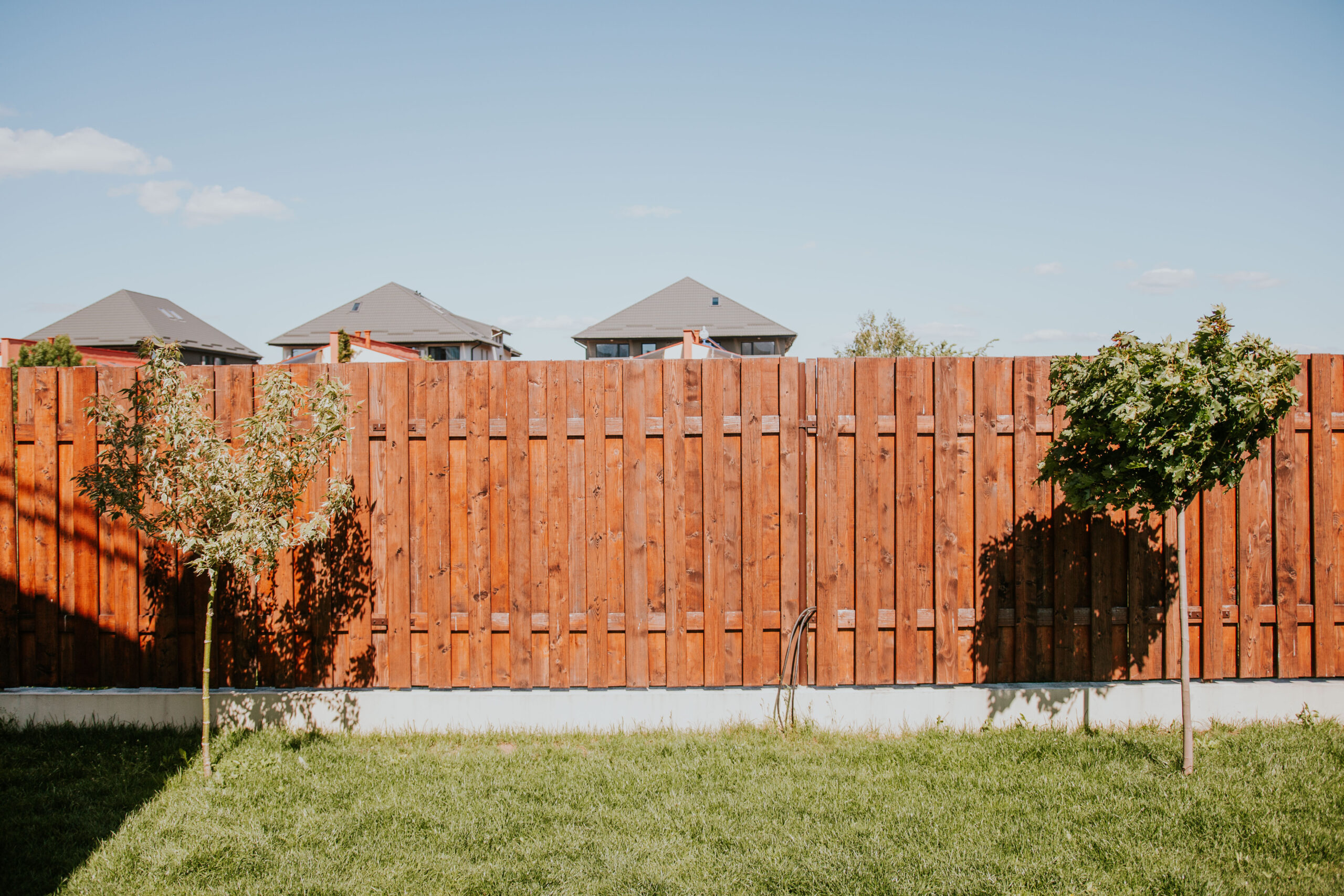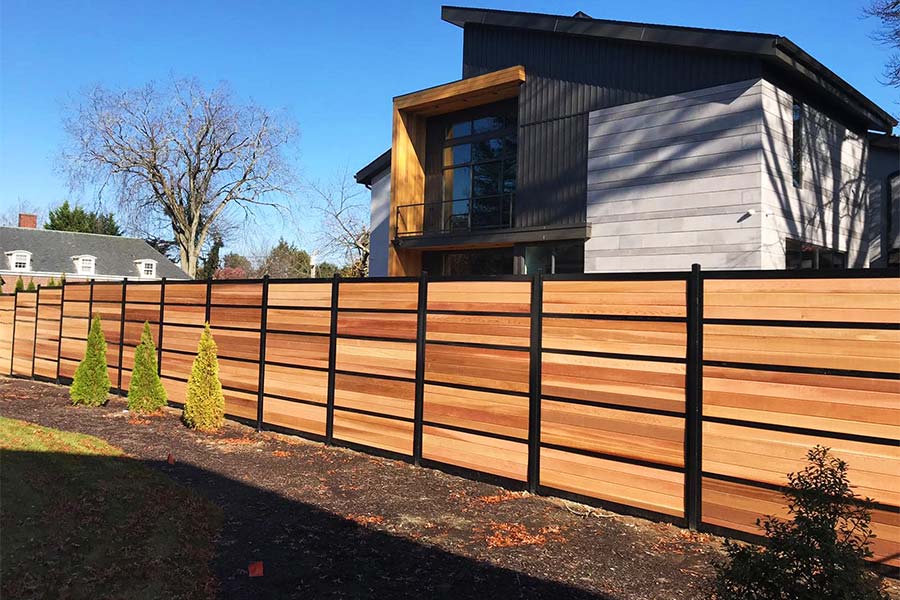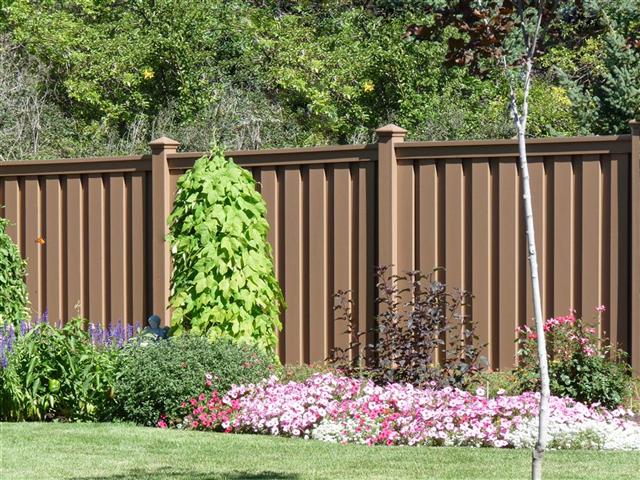All Categories
Featured
Fencings play a vital function in offering privacy, safety and security, and improving the aesthetic charm of your residential or commercial property. Nevertheless, consistent exposure to the components can result in damage. From heavy rain and snow to extreme sun and wind, weather-related damages is just one of one of the most typical root causes of fence deterioration. While you can't control the weather condition, there are several means to safeguard your fencing from the destructive impacts of climate and ensure it lasts for several years to find.
Wooden Fencings: While wood fencings are a timeless option, they are very susceptible to wetness and bugs. To make a wood fencing much more resilient, choose pressure-treated lumber, cedar, or redwood. These materials are a lot more resistant to rot and pests. Nevertheless, you'll still require to protect the wood from the aspects with routine maintenance.
Vinyl Fences: Plastic fencings are extremely durable and require little maintenance. They are immune to fading, splitting, and warping, making them ideal for areas that experience severe sun, rainfall, or chilly climate. Plastic likewise won't rot or draw in parasites, offering long-term security without the need for constant maintenance.
Metal Fences: Wrought iron and aluminum fencings are superb selections for their strength and resistance to wind and dampness. They are vulnerable to rusting over time, specifically if subjected to constant rains or humidity. Opt for powder-coated or galvanized steel fencings to decrease the danger of corrosion.
![]()
Compound Fences: Combining wood fibers and plastic, composite fences are immune to deteriorating, fading, and pest damages. They offer the look of wood with much less maintenance, making them an optimal choice for areas with variable weather.
![]()
Wooden Fences: A good top quality wood sealant or stain is vital to protect your fence from the elements. Wood sealants block dampness and protect against mold and mildew development. They also stop UV damages that can create fading and cracking. Be certain to reapply the covering every number of years to maintain your surround top condition.
Plastic Fences: While plastic is low-maintenance, you can still shield it further by using a UV protectant. These layers help prevent discoloration triggered by extended sunlight direct exposure. In addition, utilize vinyl-specific cleaners to maintain the surface free of stains or dust buildup.
Steel Fencings: To protect steel fencings from rust and corrosion, take into consideration using a rust-inhibiting primer adhered to by a protective paint designed for outdoor usage. Powder coating supplies a long lasting and resilient finish that can withstand extreme weather. if feasible.
Wood Fences: Clean your wood fence with a pressure washer or a soft towel and moderate cleaning agent. Check the fence on a regular basis for indicators of rot, cracks, or insect problems.
Vinyl Fences: Vinyl fences are easy to tidy with soap and water. For harder stains, you can use a light bleach remedy or a vinyl cleaner to bring back the fence's look. Do not forget to examine for any type of splits that might allow water in, leading to more damages.
Metal Fencings: Tidy steel fencings with a soft towel to eliminate corrosion, dust, and dirt. If you see rust spots, eliminate them quickly with a cable brush and treat the location with a rust-resistant guide or paint to stop it from spreading out.
Wooden Fences: When installing wood fencing articles, see to it they are set deeply into the ground, preferably listed below the frost line to avoid shifting throughout freezing temperatures. Usage concrete to secure the messages and avoid them from leaning or being uprooted by strong winds.
Steel Fencings: For metal fences, make certain that the posts are firmly secured in concrete. This is especially essential in areas with heavy winds or regular storms. You might likewise wish to install additional supporting to provide additional support versus wind anxiety.
Furthermore, extreme wetness from nearby plants can result in mold and mildew and rot in wood fencings, so keep vegetation at a risk-free distance to allow for correct air movement and drain.
Metal fencings should be examined for rust before the winter starts, and any kind of impacted locations should be treated with rust-resistant products. Additionally, applying a layer of paint or safety covering before the winter collections in can help shield your fence from ice and snow damages.
![]()
Verdict. Securing your fencing from weather-related damage requires a mix of proper material option, normal maintenance, and positive care. Whether you have a wood, vinyl, metal, or composite fence, the ideal safety measures can expand its lifespan and preserve its look. By complying with these basic yet efficient actions, you can guard your fencing versus the elements and keep it looking great for several years to find.
- Choose Weather-Resistant Products. One of one of the most efficient means to protect your fencing is by selecting the best material for your environment. Specific materials are more long lasting and better matched to hold up against specific weather.
Wooden Fencings: While wood fencings are a timeless option, they are very susceptible to wetness and bugs. To make a wood fencing much more resilient, choose pressure-treated lumber, cedar, or redwood. These materials are a lot more resistant to rot and pests. Nevertheless, you'll still require to protect the wood from the aspects with routine maintenance.
Vinyl Fences: Plastic fencings are extremely durable and require little maintenance. They are immune to fading, splitting, and warping, making them ideal for areas that experience severe sun, rainfall, or chilly climate. Plastic likewise won't rot or draw in parasites, offering long-term security without the need for constant maintenance.
Metal Fences: Wrought iron and aluminum fencings are superb selections for their strength and resistance to wind and dampness. They are vulnerable to rusting over time, specifically if subjected to constant rains or humidity. Opt for powder-coated or galvanized steel fencings to decrease the danger of corrosion.

Compound Fences: Combining wood fibers and plastic, composite fences are immune to deteriorating, fading, and pest damages. They offer the look of wood with much less maintenance, making them an optimal choice for areas with variable weather.
- Apply Safety Coatings. Despite the product, using protective coatings is essential in prolonging the life of your fence. Coatings develop a barrier that guards your fencing from dampness, UV rays, and various other environmental stress factors.

Wooden Fences: A good top quality wood sealant or stain is vital to protect your fence from the elements. Wood sealants block dampness and protect against mold and mildew development. They also stop UV damages that can create fading and cracking. Be certain to reapply the covering every number of years to maintain your surround top condition.
Plastic Fences: While plastic is low-maintenance, you can still shield it further by using a UV protectant. These layers help prevent discoloration triggered by extended sunlight direct exposure. In addition, utilize vinyl-specific cleaners to maintain the surface free of stains or dust buildup.
Steel Fencings: To protect steel fencings from rust and corrosion, take into consideration using a rust-inhibiting primer adhered to by a protective paint designed for outdoor usage. Powder coating supplies a long lasting and resilient finish that can withstand extreme weather. if feasible.
- Regular Cleaning and Evaluations. Proper cleansing and regular evaluations are vital to maintaining the stability of your fencing. Build-up of mold and mildew, particles, and dust can trap dampness versus your fencing and create lasting damage.
Wood Fences: Clean your wood fence with a pressure washer or a soft towel and moderate cleaning agent. Check the fence on a regular basis for indicators of rot, cracks, or insect problems.
Vinyl Fences: Vinyl fences are easy to tidy with soap and water. For harder stains, you can use a light bleach remedy or a vinyl cleaner to bring back the fence's look. Do not forget to examine for any type of splits that might allow water in, leading to more damages.
Metal Fencings: Tidy steel fencings with a soft towel to eliminate corrosion, dust, and dirt. If you see rust spots, eliminate them quickly with a cable brush and treat the location with a rust-resistant guide or paint to stop it from spreading out.
- Strengthen Your Fencing with Proper Setup. Appropriate installment is just one of the most reliable means to stop weather-related damage. A fencing that is inadequately set up is more probable to collapse or suffer damages throughout storms.
Wooden Fences: When installing wood fencing articles, see to it they are set deeply into the ground, preferably listed below the frost line to avoid shifting throughout freezing temperatures. Usage concrete to secure the messages and avoid them from leaning or being uprooted by strong winds.
Steel Fencings: For metal fences, make certain that the posts are firmly secured in concrete. This is especially essential in areas with heavy winds or regular storms. You might likewise wish to install additional supporting to provide additional support versus wind anxiety.
- Trim Trees and Hedges Near Your Fence. Disordered trees and hedges can create substantial damage to your fence, specifically during high winds or hefty tornados. Tree branches can scrape versus the fence, triggering scrapes, and their roots can undercut the blog posts. Maintain vegetation trimmed and ensure that tree branches are not leaning on or near the fence.
Furthermore, extreme wetness from nearby plants can result in mold and mildew and rot in wood fencings, so keep vegetation at a risk-free distance to allow for correct air movement and drain.
- Winterize Your Fence. Take added safety measures to safeguard your fencing from freezing temperatures, snow, and ice if you live in an area with severe winters. For wooden fences, make sure the base of the blog posts is raised above ground level to avoid water build-up, which can freeze and crack the wood. Consider utilizing a moisture barrier around the base of the messages to keep them completely dry during the winter season.
Metal fencings should be examined for rust before the winter starts, and any kind of impacted locations should be treated with rust-resistant products. Additionally, applying a layer of paint or safety covering before the winter collections in can help shield your fence from ice and snow damages.
- Post-Storm Repairs. Storms can trigger immediate damage to your fence, including fallen branches, broken posts, or dislodged panels. After each tornado, evaluate your fencing thoroughly to look for any visible damage. Address minor problems promptly prior to they end up being bigger, extra expensive repair services. It's a great idea to get in touch with a professional for repair work to guarantee it stays structurally sound. if your fence has actually been badly harmed.

Verdict. Securing your fencing from weather-related damage requires a mix of proper material option, normal maintenance, and positive care. Whether you have a wood, vinyl, metal, or composite fence, the ideal safety measures can expand its lifespan and preserve its look. By complying with these basic yet efficient actions, you can guard your fencing versus the elements and keep it looking great for several years to find.
Latest Posts
Change Your Bathroom in a Day
Published Apr 19, 25
1 min read
Montclare Auto Repair: The Trusted Choice for Brake & Engine Repairs
Published Apr 19, 25
2 min read
Expert Car Repair Services at Montclare Auto Repair - Book Today!
Published Apr 19, 25
2 min read